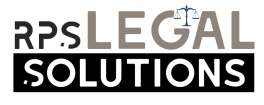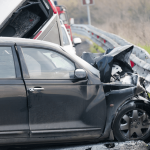Who Is Liable in a Multi-Car Accident?
Multi-car accidents, often called chain-reaction crashes or pile-ups, can be chaotic and confusing. Determining who is at fault isn’t always straightforward, especially when multiple vehicles, drivers, and insurance companies are involved. If you’ve found yourself in the middle of one of these situations, you’re probably wondering: Who is liable in a multi-car accident? Let’s break it down.
-
What Is a Multi-Car Accident?
A multi-car accident happens when three or more vehicles are involved in a series of collisions. These types of crashes often occur in:
- Heavy traffic areas like highways or intersections
- Poor weather conditions (fog, rain, or ice)
- Sudden stops or distracted driving situations
Because so many factors can contribute to these accidents, figuring out who’s responsible can get complicated.
-
How Is Fault Determined in Multi-Car Accidents?
In most cases, fault is determined based on negligence—which driver acted carelessly and caused the accident. Here’s how liability is usually assigned:
- The Driver Who Caused the First Impact: Often, the person who triggers the first collision (like rear-ending another car) is considered primarily responsible. For example, if a driver brakes too late and crashes into the car ahead, they may be liable for starting the chain reaction.
- Other Drivers’ Actions: Subsequent drivers might also share responsibility if they were speeding, following too closely, or not paying attention. For instance, if a driver could have avoided hitting the car in front but didn’t react in time, they might be partially at fault.
- Comparative Negligence: In many states, fault can be split among multiple drivers. This means each party’s level of responsibility is calculated as a percentage. For example, if two drivers are both partly to blame, their compensation might be reduced based on their share of the fault.
-
Common Scenarios in Multi-Car Accidents
- Rear-End Collisions: The driver who rear-ends another vehicle is often found at fault. However, in a multi-car pile-up, several drivers could share responsibility if they were following too closely or didn’t stop in time.
- Intersection Accidents: If a driver runs a red light or fails to yield, they could cause a multi-car collision. But other drivers might also be at fault if they were speeding or distracted.
- Weather-Related Pile-Ups: Bad weather can complicate things, but drivers are still expected to adjust their speed and maintain a safe following distance. Failing to do so might make them liable, even if weather conditions played a role.
-
What Evidence Helps Determine Fault?
To figure out who is responsible, you’ll need solid evidence. Here’s what can help:
- Police Reports: A police report provides an official account of the accident and may include who the officer believes is at fault.
- Photos and Videos: Pictures of the accident scene, vehicle damage, skid marks, and road conditions can help establish what happened.
- Witness Statements: People who saw the accident can offer valuable perspectives that clarify the sequence of events.
- Dashcam Footage: If you or another driver has dashcam footage, it can be crucial in proving who caused the crash.
-
What Happens If Multiple Drivers Are at Fault?
In many multi-car accidents, fault isn’t assigned to just one person. Here’s how shared liability works:
- Comparative Fault: In states that follow comparative negligence laws, each driver’s level of fault is assigned a percentage. For example, if you’re found 20% responsible for the accident, your compensation might be reduced by that percentage.
- Joint and Several Liability: In some cases, multiple drivers can be held jointly responsible, meaning you can seek full compensation from one party, who may then pursue reimbursement from the other at-fault drivers.
- Contributory Negligence: In a few states, if you’re found even slightly at fault, you may be barred from recovering any compensation.
-
Should You Hire a Lawyer for a Multi-Car Accident?
Multi-car accidents are complex, and dealing with multiple insurance companies can be overwhelming. A lawyer can help by:
- Investigating the Accident: Attorneys can gather evidence, work with accident reconstruction experts, and build a strong case.
- Handling Insurance Companies: With several parties involved, insurance companies might try to shift blame. A lawyer can negotiate on your behalf to ensure you receive fair compensation.
- Protecting Your Rights: If you’re wrongly blamed or face challenges proving your case, legal representation can help protect your interests.
Final Thoughts
Multi-car accidents can quickly turn into legal headaches, with multiple drivers, insurance companies, and conflicting stories complicating the process. Determining liability requires careful investigation, strong evidence, and sometimes legal help. If you’re involved in a multi-car accident, consulting with an experienced attorney can help you navigate the complexities and ensure you get the compensation you deserve. We recommend idaho car accident lawyer






